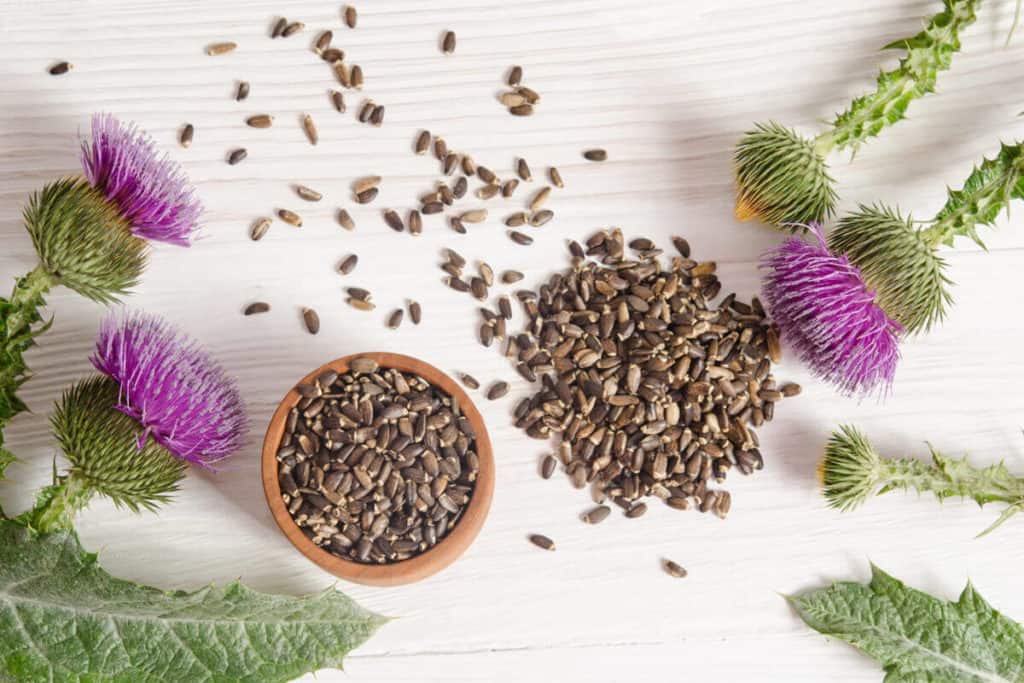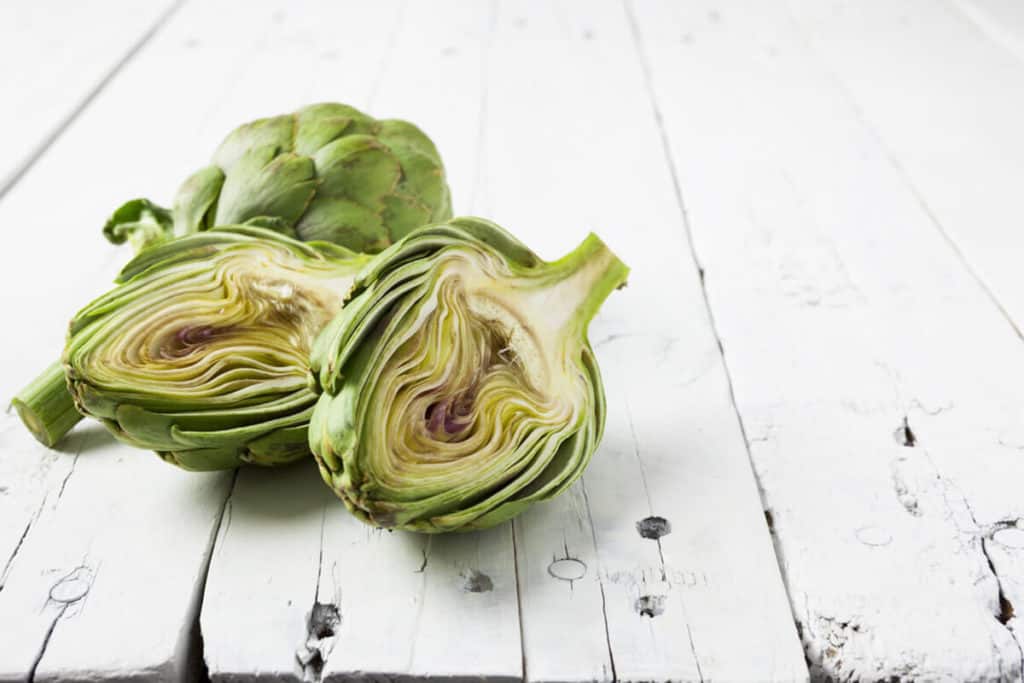
What is fatty liver disease and non-alcoholic steatohepatitis?
Non-alcoholic fatty liver disease (NAFLD) is a condition in which the body stores excess fat in the liver. Unlike alcoholic fatty liver disease, NAFLD is not caused by excess alcohol intake. There are two types of NAFLD, which include nonalcoholic fatty liver (NAFL) and nonalcoholic steatohepatitis (NASH). (13) While individuals with NAFL and NASH both present with a fatty liver, NASH is also characterized by hepatitis and liver cell damage (e.g., fibrosis). While it is still unclear as to why some individuals with NAFLD develop NAFL while others develop NASH, genetic susceptibility is believed to be a factor. (13)Causes and risk factors
Causes and risk factors for both types of NAFLD include:- Certain infections (e.g., hepatitis C)
- Certain health conditions in which your body improperly stores fat
- Certain pharmaceutical medications (e.g., amiodarone, diltiazem, glucocorticoids methotrexate, etc.)
- Certain toxins
- High triglyceride and/or cholesterol levels
- Insulin resistance
- Metabolic syndrome
- Overweight or obesity
- Rapid weight loss
- Type 2 diabetes (13)
Fatty liver disease symptoms and complications
While individuals with NASH typically display few or no symptoms, (13) complications associated with the condition include cirrhosis, liver cancer, (5) and an increased risk of mortality from liver-related conditions and cardiovascular conditions. (6)Ingredients for fatty liver support
The following ingredients have been shown to improve NAFLD and NASH.Vitamin E
Vitamin E is a fat-soluble vitamin found primarily in nuts, seeds, and green leafy vegetables. (14) Vitamin E has been shown to have antioxidant, (6)(16) anti-inflammatory and anti-apoptotic properties. Due to its role in modulating the inflammatory response and cellular function, vitamin E may delay hepatic fibrosis and prevent cirrhosis. (16) Recently, studies have demonstrated the beneficial effects of vitamin E supplementation for individuals with NAFLD and NASH. (6)(16) In one study, vitamin E supplementation was shown to be effective in reducing steatosis, fibrosis, inflammation, and several liver enzymes, including aspartate aminotransferase (AST), alanine transaminase (ALT), and alkaline phosphatase (ALP) when compared to a control. (19)
Milk thistle (Silybum marianum)
Silybum marianum, commonly known as milk thistle, is a member of the Asteraceae family along with sunflowers and daisies. (20) Used as a medicinal plant for centuries, milk thistle was first grown in Europe and used for its hepatoprotective and antioxidant properties. (11) Silymarin, found primarily in the fruit and seeds of the milk thistle plant, contains a complex of active compounds, including silybin, a primary active constituent of milk thistle. (20) These compounds are believed to be responsible for the antioxidant, antiviral, anti-inflammatory, and hepatoprotective properties of milk thistle. (11)(20) Milk thistle has demonstrated effectiveness in significantly reducing AST and ALT compared to a control. Furthermore, silybin was shown to decrease transaminases levels in NAFLD patients, improving liver function and the prognosis and progression of liver cirrhosis. (2)(12)(23)Turmeric (Curcuma longa)
A member of the ginger family, turmeric is well known for its medicinal properties and its use as a culinary spice. Turmeric was traditionally used as a medicinal herb for its antioxidant, anti-inflammatory, antimicrobial, and anticancer properties. These effects have been primarily attributed to the actions of curcumin, a polyphenol and primary active constituent of the plant. Curcumin supplements are often found in combination with other ingredients that increase its bioavailability, such as piperine, an active constituent of black pepper. (10) Research has shown that turmeric and curcumin may be effective in addressing a number of inflammatory conditions, such as cardiovascular disease, inflammatory bowel conditions, arthritis, psoriasis, diabetes, metabolic syndrome, cancer, and exercise-induced inflammation and muscle soreness. (8)(10) Curcumin has also demonstrated protective effects against chronic arsenic exposure, alcohol intoxication, and hepatic conditions. (8) Further research has indicated that curcumin may reduce ALT, AST, and gamma-glutamyltransferase (GGT) levels. (3)(15)(18) Curcumin has also been shown to suppress proinflammatory cytokines and ameliorate cellular responses to oxidative stress. (3)(7)
Artichoke (Cynara scolymus)
Like milk thistle, Cynara scolymus, commonly known as artichoke, is a member of the Asteraceae family. Traditionally, artichoke was used in the treatment of certain conditions such as hyperlipidemia. (9) Modern research has demonstrated the lipid-lowering, bile-enhancing, antioxidant, and most significantly, hepatoprotective effects of artichoke. (1) Bioactive compounds identified in artichoke responsible for its antioxidant effects include luteolin, cynarin, caffeic acid, and chlorogenic acid. (9) Artichoke leaf extract has been shown to reduce ALT and AST levels and may improve symptoms associated with NASH. (15)(17)Reishi (Ganoderma lucidum)
A well known medicinal mushroom, Ganoderma lucidum has been used in China, Japan, and other Asian countries for over 2000 years. While Ganoderma lucidum is known as reishi in Japan, in China, it is known as lingzhi, the “herb of spiritual potency”. (21)(22) G. lucidum supplements and tea can be produced from the mycelia, spores, and fruit body of the mushrooms. (21) Traditional chinese medicinal applications of G. lucidum include the treatment and prevention of a number of conditions, including immune disorders, cancer, bronchitis, allergies, and hepatitis. It is believed that G. lucidum may play a role in the maintenance of blood glucose levels, modulation of the immune system, and hepatoprotection. (21) While the use of G. lucidum was previously largely based on cultural and anecdotal evidence, scientific studies are now emerging supporting its health benefits. G. lucidum was shown in one study to reverse mild fatty liver, as well as reduce AST and ALT levels. (4)The bottom line
Management of NAFLD typically involves lifestyle modification, addressing the presence of metabolic syndrome, managing the complications of cirrhosis, and pharmaceutical intervention when necessary. (6) Several nutrients and botanicals, including vitamin E, turmeric, milk thistle, and artichoke, have demonstrated hepatoprotective properties and beneficial effects in treating NAFLD. A protocol using natural supplements can be used therapeutically on its own or as an adjunct to existing treatment. If you’re a patient, speak to your healthcare practitioner to determine whether these supplements are right for your wellness plan. If you are a practitioner, view our fatty liver support protocol.- Ben Salem, M., Affes, H., Ksouda, K., Dhouibi, R., Sahnoun, Z., Hammami, S., & Zeghal, K.M. (2015). Pharmacological Studies of Artichoke Leaf Extract and Their Health Benefits. Plant Foods for Human Nutrition, 70(4), 441-53.
- Cacciapuoti, F., Scognamiglio, A., Palumbo, R., Forte, R., & Cacciapuoti, F. (2013). Silymarin in non alcoholic fatty liver disease. World Journal of Hepatology, 5(3), 109–113.
- Chai, L.J., Zhang, Y., Zhang, P.Y., Bi, Y.N., Yuan, X.M., Li, Y.H., … Zhou, K. (2018). The antiosteoporosis effects of zhuanggu guanjie pill in vitro and in vivo. BioMed Research International, 2018, 9075318.
- Chiu, H.F., Fu, H.Y., Lu, Y.Y., Han, Y.C., Shen, Y.C., Venkatakrishnan, K., … Wang, C.K. (2017). Triterpenoids and polysaccharide peptides-enriched Ganoderma lucidum: a randomized, double-blind placebo-controlled crossover study of its antioxidation and hepatoprotective efficacy in healthy volunteers. Pharmaceutical Biology, 55(1), 1041-1046.
- Diehl, A.M., & Day, C. (2017). Cause, pathogenesis, and treatment of nonalcoholic steatohepatitis. The New England Journal of Medicine, 377, 2063-2072
- Dyson, J.K., Anstee, Q.M., McPherson, S. (2015). Republished: Non-alcoholic fatty liver disease: A practical approach to treatment. Postgraduate Medical Journal, 91, 92-101.
- Farzaei, M.H., Zobeiri, M., Parvizi, F., El-Senduny, F.F., Marmouzi, I., Coy-Barrera, E., … Abdollahi, M. (2018). Curcumin in liver diseases: A systematic review of the cellular mechanisms of oxidative stress and clinical perspective. Nutrients, 10(7).
- Gupta, S.C., Patchva, S., & Aggarwal, B.B. (2013). Therapeutic roles of curcumin: Lessons learned from clinical trials. The AAPS Journal, 15(1), 195–218.
- Heidarian, E., & Rafieian-Kopaei, M. (2012). Protective effect of artichoke (Cynara scolymus) leaf extract against lead toxicity in rat. Pharmaceutical Biology, 51(9), 1104-1109.
- Hewlings, S.J., & Kalman, D.S. (2017). Curcumin: A review of its’ effects on human health. Foods, 6(10), 92.
- Karimi, G., Vahabzadeh, M., Lari, P., Rashedinia, M., & Moshiri, M. (2016). “Silymarin”, a promising pharmacological agent for treatment of diseases. Iranian Journal of Basic Medical Sciences, 14(4), 308–317.
- Loguercio, C., Andreone, P., Brisc, C., Brisc, M.C., Bugianesi, E., Chiaramonte, M., … Federico, A. (2012). Silybin combined with phosphatidylcholine and vitamin E in patients with nonalcoholic fatty liver disease: a randomized controlled trial. Free Radical Biology and Medicine, 52(9), 1658-65.
- National Institute of Diabetes and Digestive and Kidney Disease. (2016). Symptoms & causes of NAFLD & NASH. Retrieved from https://www.niddk.nih.gov/health-information/liver-disease/nafld-nash/symptoms-causes
- National Institutes of Health. (2018). Vitamin E: Fact sheet for health professionals. Retrieved from https://ods.od.nih.gov/factsheets/VitaminE-HealthProfessional/
- Panahi, Y., Kianpour, P., Mohtashami, R., Jafari. R., Simental-Mendía, L.E., & Sahebkar, A. (2017). Efficacy and safety of phytosomal curcumin in non-alcoholic fatty liver disease: A randomized controlled trial. Drug Research, 67(4), 244-251.
- Perumpail, B.J., Li, A, A., John, N., Sallam, S., Shah, N.D., Kwong, W., … Ahmed, A. (2018). The role of vitamin E in the treatment of NAFLD. Disease, 6(4), 86.
- Radchenko, V.G., Seliverstov, P.V., Ledentsova, S.S., & Manyakov, A.V. (2016). Nonalcoholic steatohepatitis and biliary sludge in people with metabolic syndrome. Terapevticheskiĭ Arkhiv, 88(9), 78-83.
- Rahmani, S., Asgary, S., Askari, G., Keshvari, M., Hatamipour, M., Feizi, A., & Sahebkar, A. (2016). Treatment of non-alcoholic fatty liver disease with curcumin: A randomized placebo-controlled trial. Phytotherapy Research, 30(9), 1540-8.
- Sato, K., Gosho, M., Yamamoto, T., Kobayashi, Y., Ishii, N., Ohashi, T., … Yoneda, M. (2015). Vitamin E has a beneficial effect on nonalcoholic fatty liver disease: a meta-analysis of randomized controlled trials. Nutrition, 31(7-8), 923-30.
- Siegel, A.B., & Stebbing, J. (2013). Milk thistle: early seeds of potential. The Lancet Oncology, 14(10), 929–930.
- Wachtel-Galor, S., Yuen, J., Buswell, J.A., & Benzie, I.F.F. (2011). Ganoderma lucidum (lingzhi or reishi): A medicinal mushroom. In I.F.F. Benzie, & Wachtel-Galor, S. (Eds), Herbal Medicine: Biomolecular and Clinical Aspects.
- Wu, D., Deng, Y., Chen, L., Zhao, L., Bzhelyansky, A., & Li, S. (2017). Evaluation on quality consistency of Ganoderma lucidum dietary supplements collected in the United States. Scientific Reports, 7, 7792.
- Zhong, S., Fan, Y., Yan, Q., Fan, X., Wu, B., Han, Y., … Niu, J. (2017). The therapeutic effect of silymarin in the treatment of nonalcoholic fatty disease: A meta-analysis (PRISMA) of randomized control trials. Medicine (Baltimore), 96(49), e9061.





